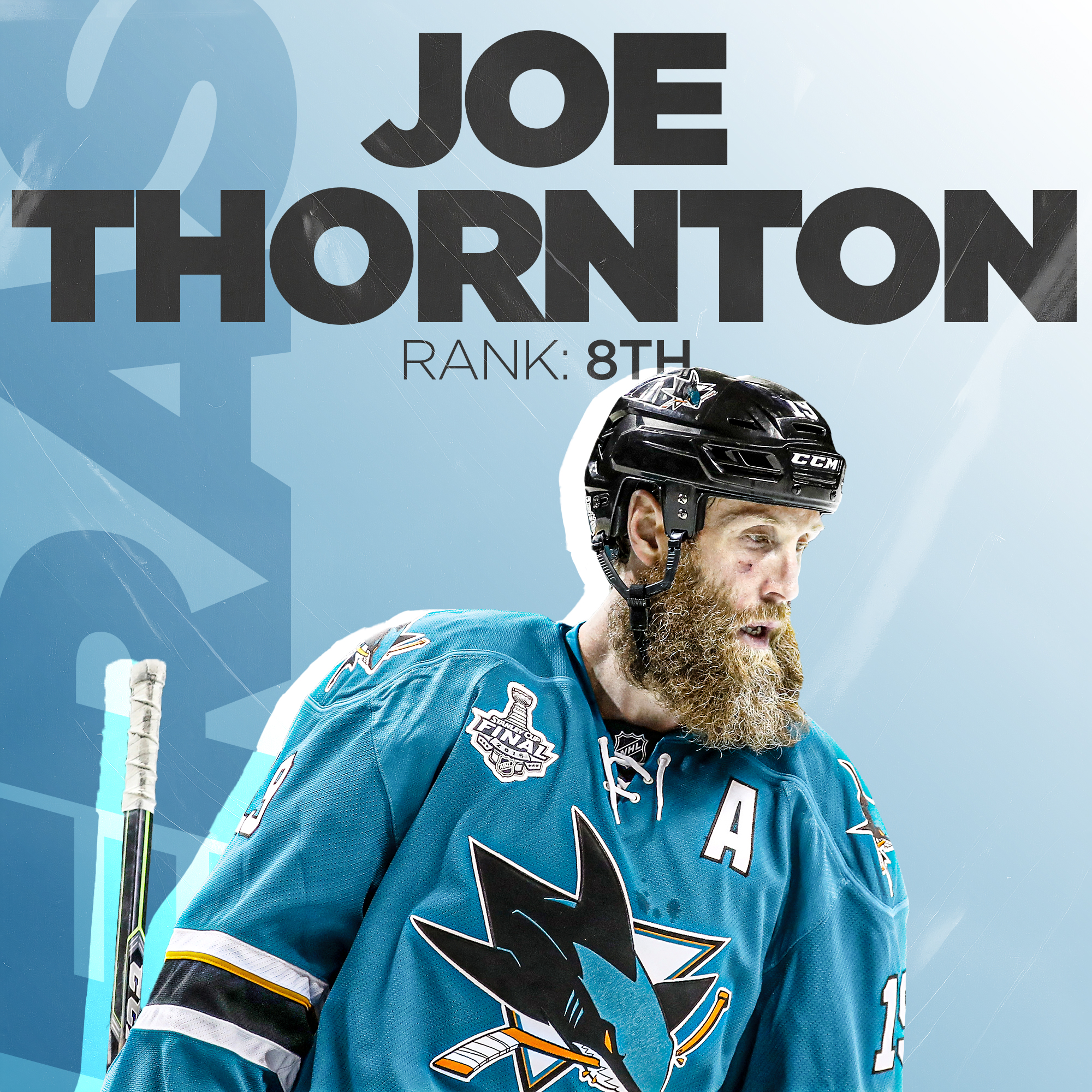Best since Gretz: The NHL players ranked 6-10 in the last 25 years
A quarter century has passed since Wayne Gretzky retired as the NHL's all-time scoring leader and undisputed top talent. To mark the milestone, theScore set out to rank and discuss the 25 best players of the post-Gretzky era.
Stats and accolades compiled before the 1999-00 season weren't considered for this exercise. For example, Nicklas Lidstrom was evaluated as a 10-time (not a 12-time) All-Star.
Monday: Introductory essay and players 21-25
Tuesday: Players 16-20
Wednesday: Players 11-15

Era teams: Chicago Blackhawks 2005-21, Edmonton Oilers 2021-22
Signature performance: Keith took an errant puck to the face in the clinching game of the 2010 Western Conference Final. He lost seven teeth, missed a couple of shifts for repairs, then returned to the Blackhawks' bench to finish the job, a 3-2 victory. He still skated for a game-high 29 minutes.
The playoff warrior wasn't simply riding a high that night. He was phenomenal over the next couple of weeks, too, recording seven points in the Stanley Cup Final while performing his usual all-situations duties as Chicago's undisputed No. 1 defenseman. He averaged 29 minutes over six games.
Why he's here: Keith was the second-most important player on the Blackhawks teams that won three Cups and played in two other conference finals over a seven-year span. He wasn't quite as vital to their success as Patrick Kane was, but he was more impactful shift to shift than Jonathan Toews.
Keith wasn't an overly physical blue-liner, but he was nearly impossible to beat one-on-one due to his ability to take away time and space with his feet and stick. He was a tough-as-nails puck-mover who seemed to never get his due as a high-end skater and passer. While his insatiable will to win led to multiple suspensions, Keith's take-no-prisoners style of play was an overall strength.
A two-time Norris Trophy winner, Keith won the 2015 Conn Smythe Trophy after two months of two-way dominance that concluded with scoring the Cup-winning goal. He put up solid offensive numbers throughout his career - 0.51 points per game in the regular season and 0.60 in the playoffs - but it was his dependability and versatility that won over teammates, coaches, and rivals.
Keith's conditioning was off the charts, too. He was ahead of his time among NHLers with regard to nutrition, sleep, and off-ice training. - John Matisz

Era teams: Ottawa Senators 2009-18, San Jose Sharks 2018-23, Pittsburgh Penguins 2023-present
Signature performance: Painting a masterpiece, Karlsson weathered hairline fractures in his left heel to dominate on one foot in the 2017 postseason. He scored 18 points (15 at even strength) in 19 games and dragged a pedestrian Senators team to within a goal of the Cup Final.
Two passes against the Bruins crystallized his genius. Karlsson helped seal Ottawa's first playoff win by scooting away from a checker to exploit a passing lane to Derick Brassard that no one else in the building saw. He outdid himself in the next game, saucering a three-line long bomb to Mike Hoffman for a breakaway beauty.
Why he's here: At his peak, Karlsson was an outrageous offensive talent who set the standard for playmaking from the blue line in the 21st century. A sublime skater and thinker, he glided past sprinting opponents and served pucks on a platter for teammates like Brassard to net.
Karlsson topped all defensemen in this 25-year era with 628 assists, dishing two more than former Sharks sidekick Brent Burns in 413 fewer games. He ranked fourth at the position in goals (189) and only trailed Burns in even-strength goals (145). He won three Norris Trophies and was a close runner-up to Drew Doughty in 2016 and Burns in 2017.
The most dazzling Senator, Karlsson captained and carried the franchise after his mentor, Daniel Alfredsson, retired. He scored two game-winners - one from below the goal line in the corner of the offensive zone - and added three assists in a third win over the Rangers in the second round in 2017. He received a Conn Smythe vote despite Ottawa's elimination in Game 7 of the conference finals.
Karlsson blocks shots and can backcheck in a flash, but his teams prefer it when the puck's on his stick. He led the Senators in scoring for five straight seasons. With a wildly entertaining 101-point final year in San Jose, Karlsson became the first blue-liner since the early '90s to record triple digits.
He's conquered adversity for 1,002 games and counting. Skeptics blasted the Senators in 2008 for drafting a slight defenseman in the first round. Karlsson dealt with serious Achilles, foot, and groin injuries but always rediscovered his acceleration and swagger. - Nick Faris

Era teams: Boston Bruins 1999-2005, Sharks 2005-20, Toronto Maple Leafs 2020-21, Florida Panthers 2021-22
Signature performance: Thornton won the first scoring title of the high-octane post-lockout years with 125 points (96 were assists) in 2005-06. He caught fire after the Bruins dealt him to the Sharks at the end of November, producing 1.59 points per game as San Jose went 36-15-7 with him in the lineup.
Besides clinching the Hart and Art Ross Trophies, Thornton shared responsibility for a third major award. Linemate Jonathan Cheechoo, the 56-goal Rocket Richard winner, filled the net after Thornton's acquisition with five hat tricks and eight additional two-goal games.
Why he's here: His generation's top passer, Thornton's 1,080 assists from 1999 onward catapulted him to third in the era in points (1,491) behind Sidney Crosby and Alex Ovechkin. With two 90-assist seasons, he was the sole NHLer to hit that milestone during his time in the league.
"Jumbo Joe" authored one 100-point season for the Bruins, one for the Sharks, and another that straddled his blockbuster trade out of Boston following a string of early playoff exits. Teal and the Bay Area suited Thornton, who promptly became the only NHL MVP who changed clubs midyear.
San Jose won 14 rounds and ranked third in the NHL in playoff victories during Thornton's 15-year tenure. He was the scoring leader for the 2016 Cup finalist team that upset three favored opponents. But 10 franchises savored a championship after Thornton moved west, and the Sharks weren't one of them.
That shortcoming stung, but Thornton was admired for making linemates better. He assisted 30 of Glen Murray's 44 goals for the 2002-03 Bruins and 69 of Cheechoo's 93 over Thornton's first two years in San Jose. His ability to rag the puck and whip accurate passes through the heart of the defense was summed up in 2007 by a brilliant backhand feed to Patrick Marleau, who was taken straight after Thornton at the top of the 1997 draft.
Thornton's incredible longevity boosted him to sixth all-time in games played (1,714 over 24 seasons). His friendliness and a beard that got bushier with age endeared Thornton to fans - in San Jose, of course, but also in Toronto and Florida - who wished he retired with a ring. - Faris

Era teams: Penguins 2006-present
Signature performance: The box score for Game 2 of the 2009 Eastern Conference Final is comical. In a 7-4 Penguins win, Malkin bagged three goals on eight shots, including the winner, and recorded a primary assist, in 19:31.
Pure dominance from No. 71.
Raw numbers don't do his night justice, though, since the way he scored was classic Malkin. The first involved him coming off the bench, hustling into the play, and whacking home a rebound. The second had him buzzing around the net, overpowering a defender, then scoring on his second shot of the sequence. The hat trick marker saw him bully his way to a faceoff win, curl around the net, and snipe a no-look backhand into the top corner.
Why he's here: "Geno" has forever been overshadowed by longtime teammate and friend Sidney Crosby and divisional rival and countryman Alex Ovechkin. But it would be insulting to label him some overqualified sidekick.
Malkin's 2006-12 peak was as superb as Crosby's and Ovechkin's. What keeps him from being a top-five guy of the era is the relative shortness of his peak.
Back then, Malkin probably could have left Pittsburgh and led his own team to a Cup. He was a power forward who used puck protection techniques to bowl over or spin around opponents. His handles were elite, a standout feature partly because 6-foot-3 two-way centers don't typically possess silky hands.
Malkin, who occasionally activates that patented beast mode even in his late 30s, has a full trophy case: three Cups, a Hart, two Art Rosses, a Conn Smythe, and a Calder. He was MVP runner-up twice, while all four of his end-of-season All-Star nods were First Team, meaning he was voted top center in the NHL four times. His 1,296 points rank fourth in the post-Gretzky era.
In 2017, the big Russian was inexplicably left off the NHL's official top 100 players list celebrating the league's centennial anniversary. - Matisz

Era teams: New Jersey Devils 1999-2014, St. Louis Blues 2014-15
Signature performance: Looking like a college basketball player who's just won an NCAA championship, Brodeur took scissors to the mesh of his net after a 2009 regular-season game at the Prudential Center in New Jersey.
He'd earned a unique celebration, having stopped 30 shots in a 3-2 victory over the Blackhawks for his 552nd win, making him the NHL's leader in that category. Brodeur gave his teams a chance to win a disproportionately high percentage of his starts, and he was on top of the world at that moment.
Why he's here: Unlike fellow all-timers Patrick Roy and Dominik Hasek, Brodeur played the vast majority of his career in the 21st century. He's the defining goalie of the post-Gretzky era and, frankly, no one from the rest of the pack - led by Henrik Lundqvist, Andrei Vasilevskiy, and Roberto Luongo - comes close.
This era covers 891 of Brodeur's 1,266 games - or 70% of his 22 seasons - as well as all four of his Vezina Trophies (incredibly, over a five-year stretch); two of his three Cups; and two of his three goals. His outstanding puck-handling as a "third defenseman" led to the NHL's installation of the trapezoid, an area behind the net in which goalies aren't allowed to touch the puck.
Brodeur was a hybrid goalie, a mix of the butterfly and stand-up styles. He had a fantastic glove hand, and while he was definitely a beneficiary of the Devils' stingy defensive structure, he was also a key cog in the system. The neutral-zone trap wouldn't have been as successful with a different goalie.
Brodeur, a seven-time All-Star, was extraordinarily competent and durable above all else, routinely appearing in 70-plus games a season. - Matisz
The series wraps up Friday with the top five.
John Matisz and Nick Faris cover the NHL for theScore.